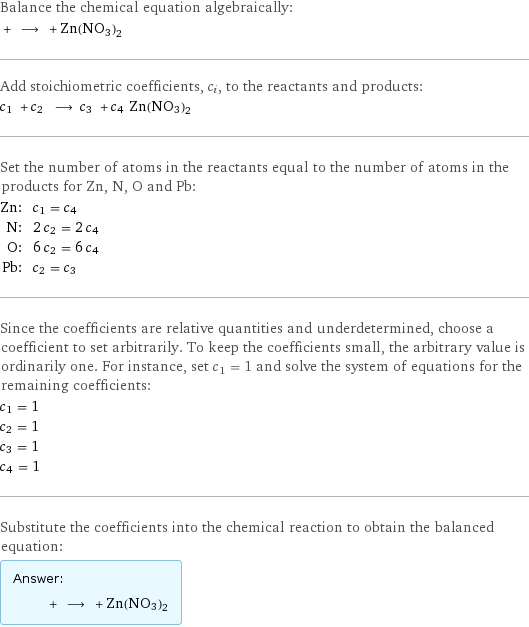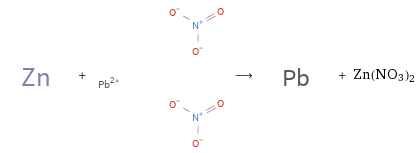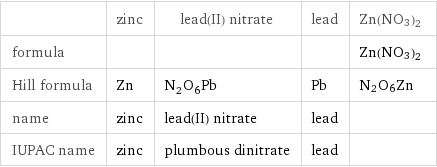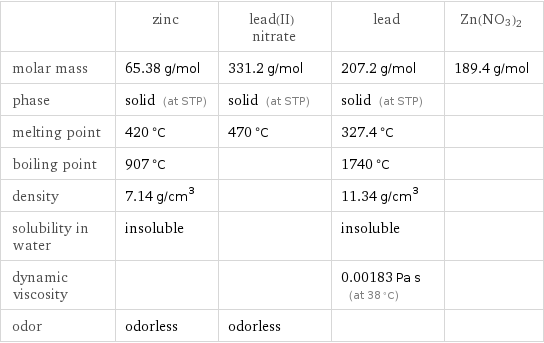Input interpretation

zinc + lead(II) nitrate ⟶ lead + Zn(NO3)2
Balanced equation

Balance the chemical equation algebraically: + ⟶ + Zn(NO3)2 Add stoichiometric coefficients, c_i, to the reactants and products: c_1 + c_2 ⟶ c_3 + c_4 Zn(NO3)2 Set the number of atoms in the reactants equal to the number of atoms in the products for Zn, N, O and Pb: Zn: | c_1 = c_4 N: | 2 c_2 = 2 c_4 O: | 6 c_2 = 6 c_4 Pb: | c_2 = c_3 Since the coefficients are relative quantities and underdetermined, choose a coefficient to set arbitrarily. To keep the coefficients small, the arbitrary value is ordinarily one. For instance, set c_1 = 1 and solve the system of equations for the remaining coefficients: c_1 = 1 c_2 = 1 c_3 = 1 c_4 = 1 Substitute the coefficients into the chemical reaction to obtain the balanced equation: Answer: | | + ⟶ + Zn(NO3)2
Structures

+ ⟶ + Zn(NO3)2
Names

zinc + lead(II) nitrate ⟶ lead + Zn(NO3)2
Chemical names and formulas

| zinc | lead(II) nitrate | lead | Zn(NO3)2 formula | | | | Zn(NO3)2 Hill formula | Zn | N_2O_6Pb | Pb | N2O6Zn name | zinc | lead(II) nitrate | lead | IUPAC name | zinc | plumbous dinitrate | lead |
Substance properties

| zinc | lead(II) nitrate | lead | Zn(NO3)2 molar mass | 65.38 g/mol | 331.2 g/mol | 207.2 g/mol | 189.4 g/mol phase | solid (at STP) | solid (at STP) | solid (at STP) | melting point | 420 °C | 470 °C | 327.4 °C | boiling point | 907 °C | | 1740 °C | density | 7.14 g/cm^3 | | 11.34 g/cm^3 | solubility in water | insoluble | | insoluble | dynamic viscosity | | | 0.00183 Pa s (at 38 °C) | odor | odorless | odorless | |
Units
